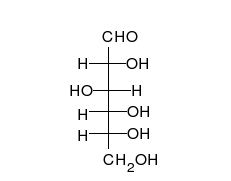JEE Chemical Kinetics 2
 A reaction takes place in various steps. The rate constants for the first, second, third and fifth steps are
and
respectively. The overall rate constant is given by
A reaction takes place in various steps. The rate constants for the first, second, third and fifth steps are
and
respectively. The overall rate constant is given by
If the activation energies are 40, 60, 50 and 10 kJ/mol, respectively, what is the overall energy of activation (in kJ/mol)?
Note: The above image is not the described reaction.
Image credit: Wikipedia Wikimuzg
This problem is a part of My picks for JEE 2
The answer is 25.
This section requires Javascript.
You are seeing this because something didn't load right. We suggest you, (a) try
refreshing the page, (b) enabling javascript if it is disabled on your browser and,
finally, (c)
loading the
non-javascript version of this page
. We're sorry about the hassle.
According to Arrhenius Equation, note that k = A × e − R T E a Since A , R and T are constants, k ∝ e E a k ∝ e 6 0 − 5 0 × ( e 4 0 − 1 0 ) 0 . 5 k ∝ e 2 5 ⇒ E a = 2 5